She must have been a real hoot. The American artist known as Grandma Moses was 78 years old when she started painting and often said that if she hadn’t taken up painting, she would’ve just continued raising chickens!
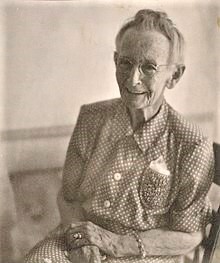 When questioned about why she began painting so late in life, she claimed it was because she was looking for something to keep her out of mischief. Oh, and before she became famous, she used to display her paintings at the county fair next to her prize-winning pickles.
When questioned about why she began painting so late in life, she claimed it was because she was looking for something to keep her out of mischief. Oh, and before she became famous, she used to display her paintings at the county fair next to her prize-winning pickles.
As I said, a real hoot.
This feisty grandma was full of personality, a vivid trait that shone through the equally vivid colors and designs of her enchanting art.
If her picture reminds you a bit of “Granny” Clampett in the old comedy series The Beverly Hillbillies, it’s because the TV character was actually modeled on the real Grandma Moses, who died the year before the series began. The stage name of the character (played by Irene Ryan) was Daisy “Granny” Moses.
Touching the Heart
Anna Mary Robertson Moses (1860-1961), was an American original who lived to the venerable age of 101. She left upwards of 2000 paintings to posterity and painted to the very end. She was five years old when Lincoln was assassinated but vividly recalled the event her whole life. Another US President, John F. Kennedy, called her “a beloved figure of American life” when she died. Indeed she was.
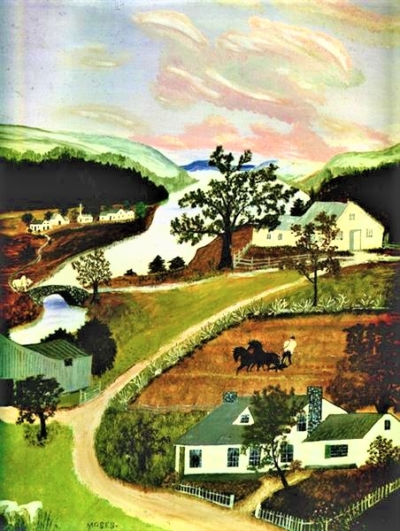
The Spring in Evening, 1947
I believe the reason for Grandma Moses’ success lies not so much in refined talent – she was entirely self-taught as an artist and her simple scenes are sometimes called folk art – but in the capacity of her art to tug at the heartstrings of a whole generation of Americans.
Art is not always about talent, as such. It’s about the ability of an artist to touch hearts and minds by using some artistic medium to raise them up to a higher ense of values and purpose.
Grandma Moses did this with the relaxed grace of a country quilter. Her bright, clear colors and simple patterns reflect the crafts and needlepoint of her rural lifestyle and generation. Her choices of scenery and humble human scenarios resonated with millions simply as “home”.
In a later New York Times interview, she explained her artistic method: “I’ll get an inspiration and start painting; then I’ll forget everything, everything except how things used to be and how to paint it so people will know how we used to live.”
That’s about as noble a motive for doing art as anyone has ever articulated. Here’s another quotable Grandma Moses quote:
I like pretty things the best. What’s the use of painting a picture if it isn’t something nice? So I think real hard till I think of something real pretty, and then I paint it. I like to paint old-time things, historical landmarks of long ago, bridges, mills, and hostelries, those old-time homes, there are a few left, and they are going fast.
Even in her day, the wholesomeness of American rural life was rapidly disappearing. Its characteristics were the solidarity of small communities, strong religious and moral values, and the vibrancy of intact families, traits that permeate every brush stroke of her art. Beauty, Truth, and Goodness are always connected in good art, as three facets of a single diamond.
And Grandma Moses is certainly a precious gem of American national and artistic culture in every sense.
An American Success Story
At the height of the Great Depression (1937) her paintings were “discovered” by an art collector named Louis J. Caldor who happened to be visiting her home town in upstate New York.
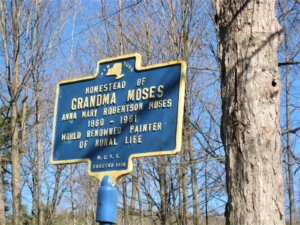 When Caldor saw a few of her paintings in a local shop window, he became so enamored of her delightful style that he bought all her paintings from the store for $5 or $10 each, then drove to her home and purchased fifteen more!
When Caldor saw a few of her paintings in a local shop window, he became so enamored of her delightful style that he bought all her paintings from the store for $5 or $10 each, then drove to her home and purchased fifteen more!
The following year he arranged to show her works at an exhibition for new artists at the Museum of Modern Art in New York City…and the rest is history. Only in America can an elderly lady with a knack for depicting homey things – “how we used to live” – become an overnight success.
The famous Gimbels Department Store in New York often displayed a whole collection of them, and Hallmark Cards bought the rights to use many of them on their Christmas, Thanksgiving, and Halloween cards.
More than four decades after her death, her art had become even more popular than she could have imagined: in 2006 one of her paintings went up for auction and sold for $1.2 million.
Not surprisingly, Grandma Moses became a fast friend of another painter of down-home Americana, Norman Rockwell, who was also popular during the mid-20th century and for the same reasons. Their art simply spoke to the hearts of millions.
A Lost Way of Life (Almost)
It’s not a stretch to say that Grandma Moses was born and bred in a generation that would not recognize the world of 21st century America.
She was a farm girl in every fiber of her being. She grew up on a farm, married a farmhand, and had ten children (five of whom survived). She knew canning, quilting, spinning, crafting, milking, baking and cooking, along with every other function and smell of farm life.
Her person and her art were almost a summation of the simple, rural American way of life that formed the mainstream culture of this country for nearly 200 years. Clearly some people still live this way, but it’s no longer possible to call the rural way of life the American mainstream. What we see on Super Bowl halftime shows is more like the current state of affairs.
Freshness and Vitality
I believe the vitality and freshness of a Grandma Moses painting lies not just in the quaint, colorful, rural life scenes. It also resides in a certain technological innocence they portray.
Hers was an era untainted by Facebook. She knew nothing of the Internet, Google, Twitter, Instagram, and the Kardashians, all of which are creations of the technological revolution that blossomed well after her death in the early ’60s.
Modern society and technology are not all negative, by any means. The newsletter you’re reading is a product of that revolution too!
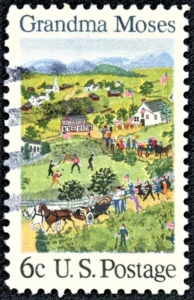 It’s just that modern life is excessively complicated. Everything is dominated by slick professionals, techno-geeks, culture warriors, and political operatives instead of the “common man” who uses his wits and his common sense to conquer the challenges of life.
It’s just that modern life is excessively complicated. Everything is dominated by slick professionals, techno-geeks, culture warriors, and political operatives instead of the “common man” who uses his wits and his common sense to conquer the challenges of life.
The very simplicity and vibrancy of her images stands as a reproach to the vulgar complexity of the modern world. Wouldn’t it be nice to worry about whether the wind will blow your laundry off the line rather than whether or not you can remember the access code to your cell phone?
Maybe it’s too much to hope that the beauty of Grandma Moses’ simple art could spark a renewal toward a more wholesome manner of living in our age, but it is something to pray for – fervently.
A Few Images
With an oeuvre of some 2000 paintings, I can’t even begin to show a representative sample of her work. I can only offer a few paintings here (depicting both inside and outside scenes) and point you to a more comprehensive collection of her art available on the internet.
Here are six colorful, fun paintings from the WikiArt page* with a link to an art resource below that. Enjoy! (Click on pictures to enlarge.)
*Images used in accord with “Fair Use” policy adopted by WikiArt.org.
———-
[Note: This article is a reproduction of the Sacred Windows Email Newsletter of 2/20/22, so it does not end with the regular Soul Work section. Please visit our Newsletter Archives.]

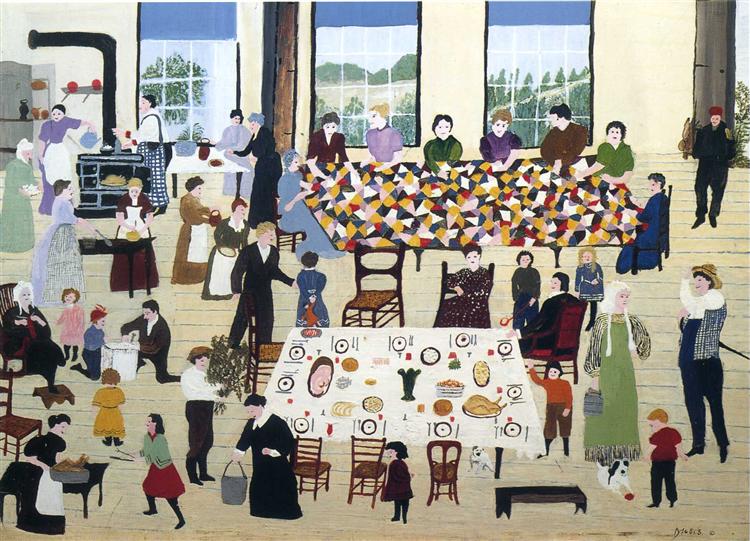
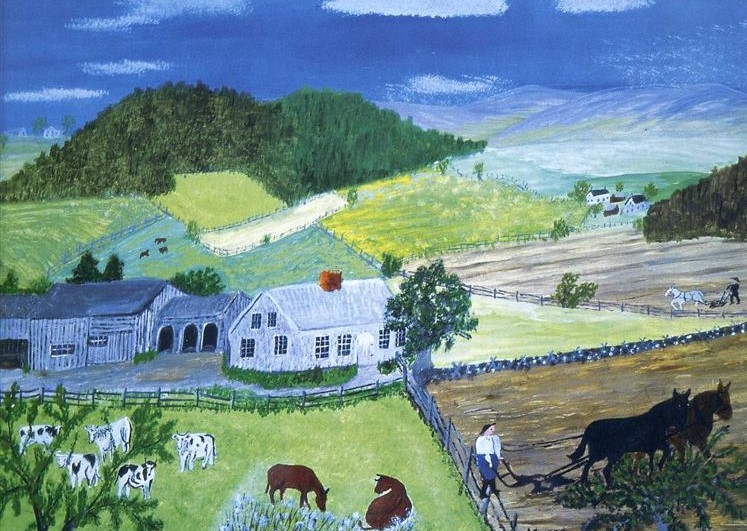
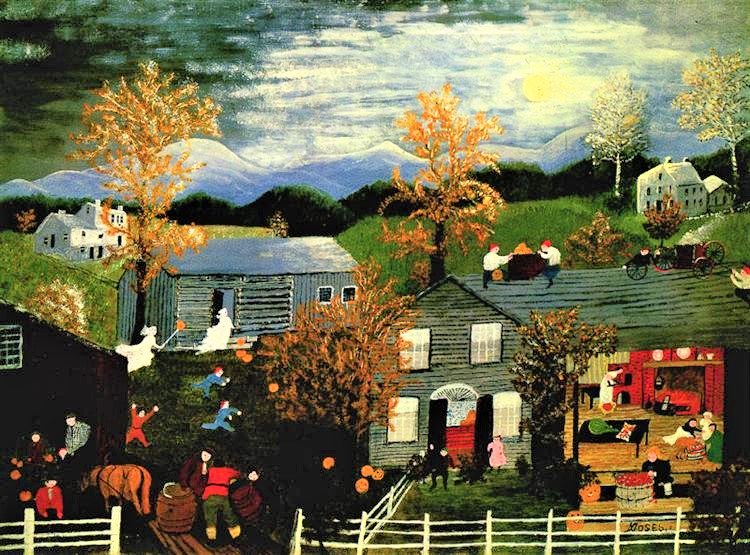
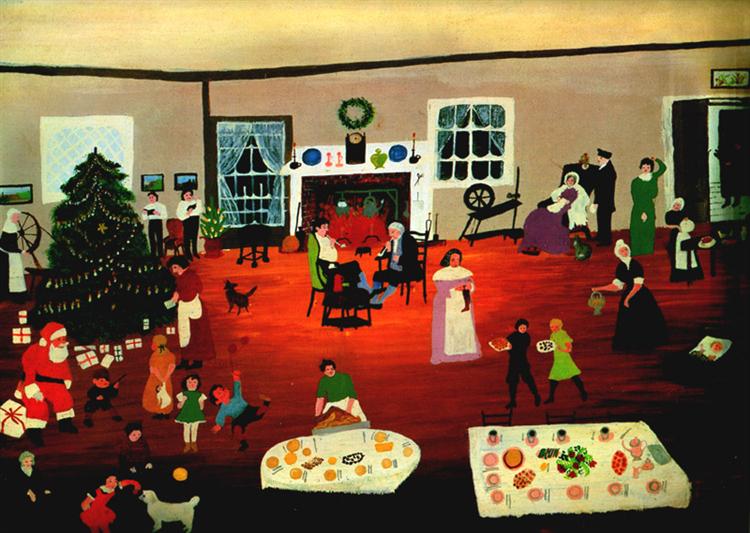
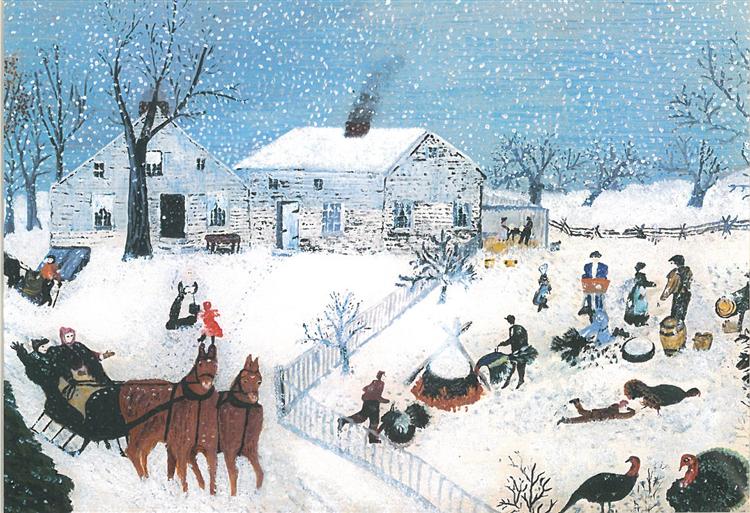
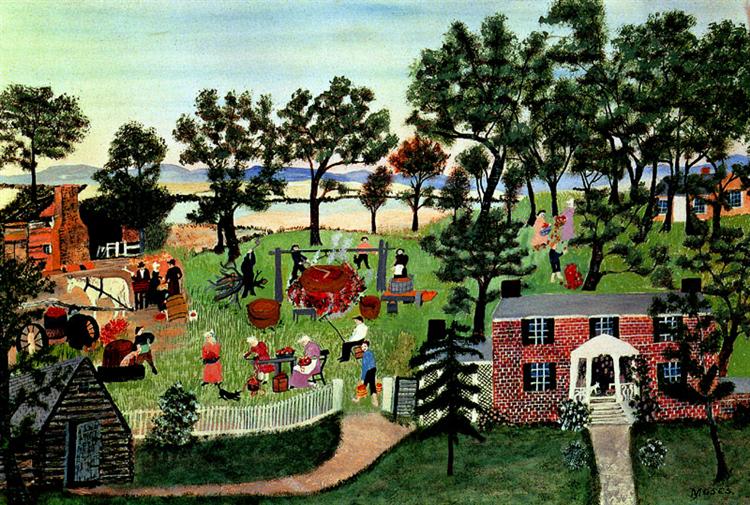

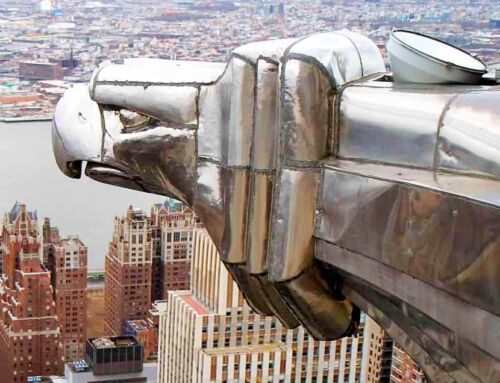
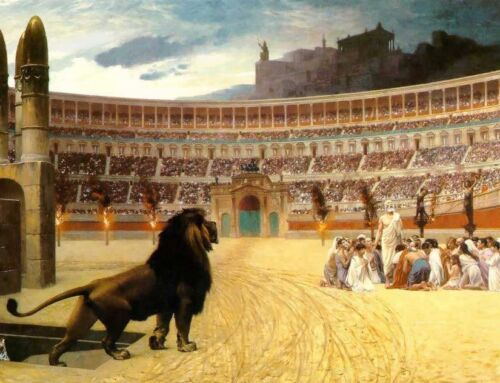
[…] Grandma Moses’ artwork, his poems often capture the essence of rural American living and draw out the profound […]